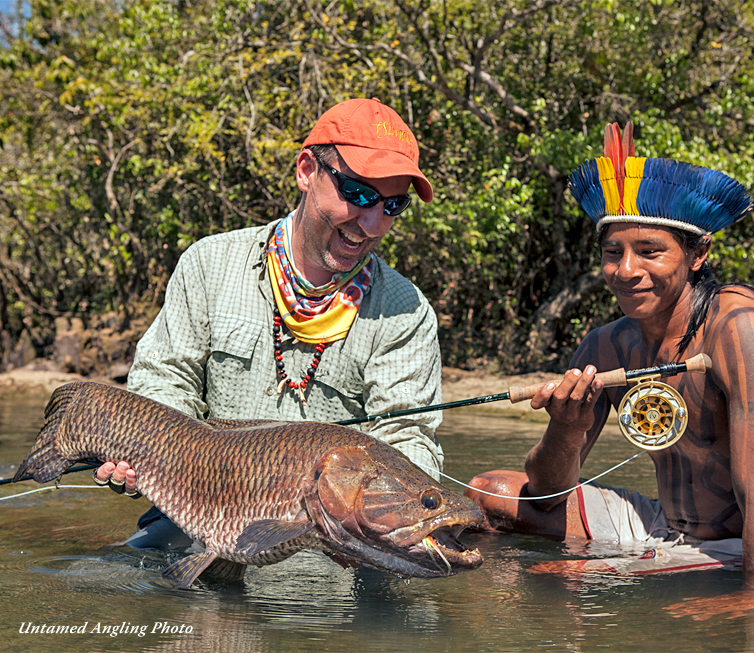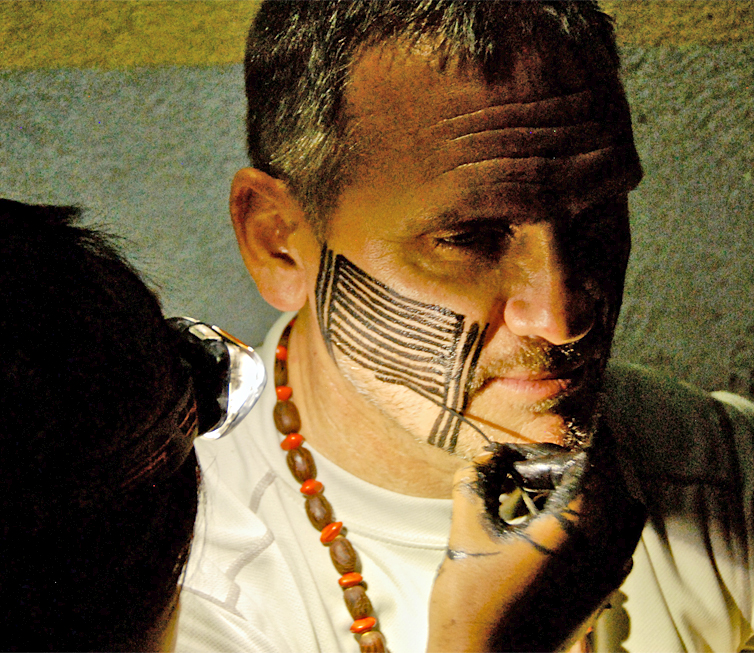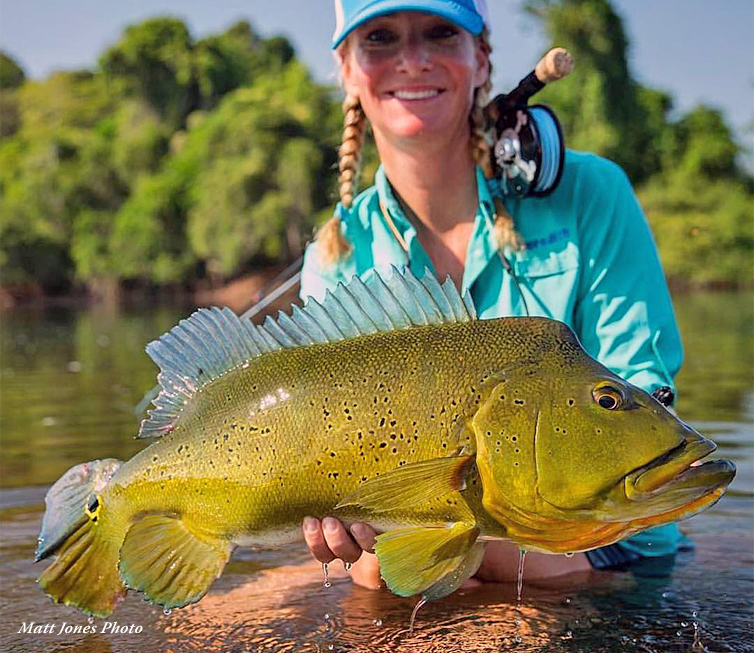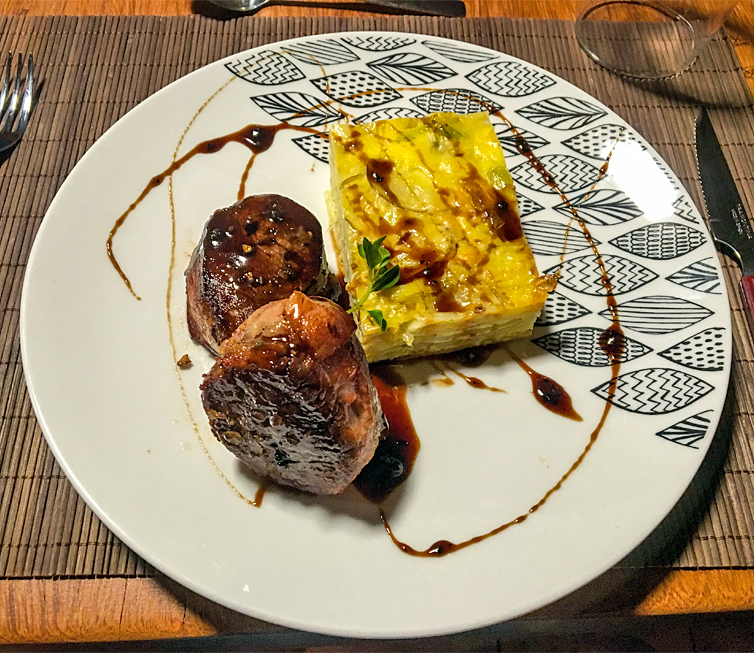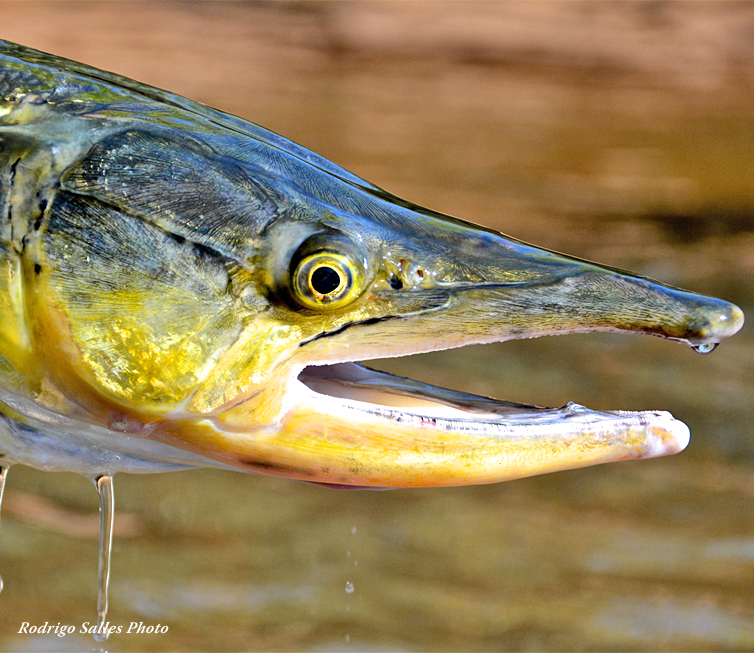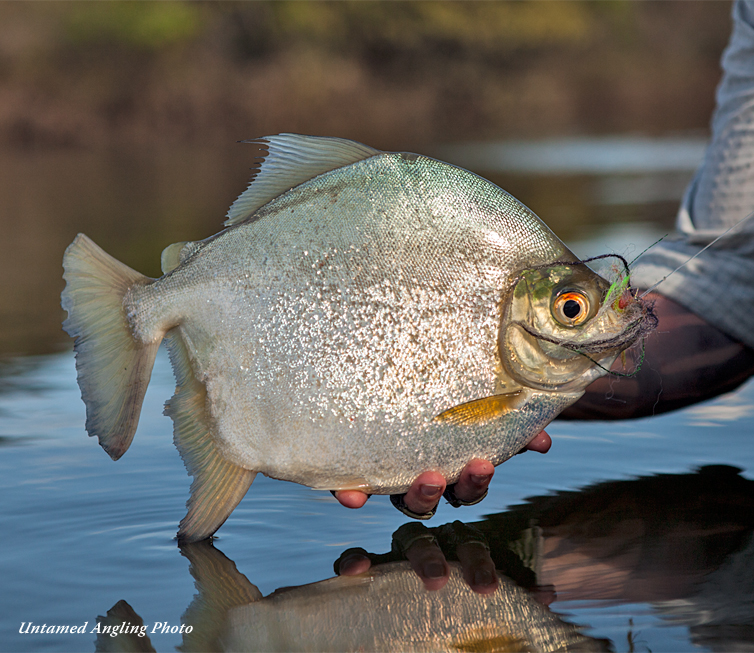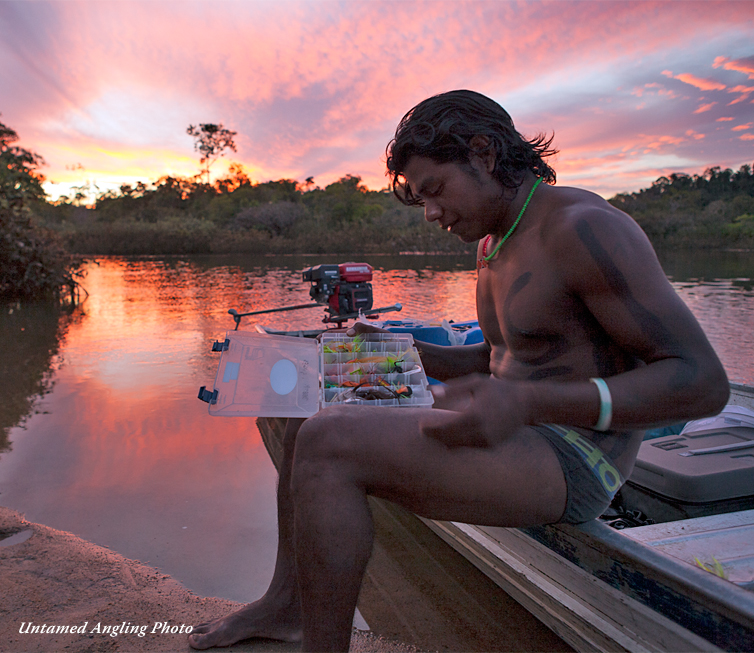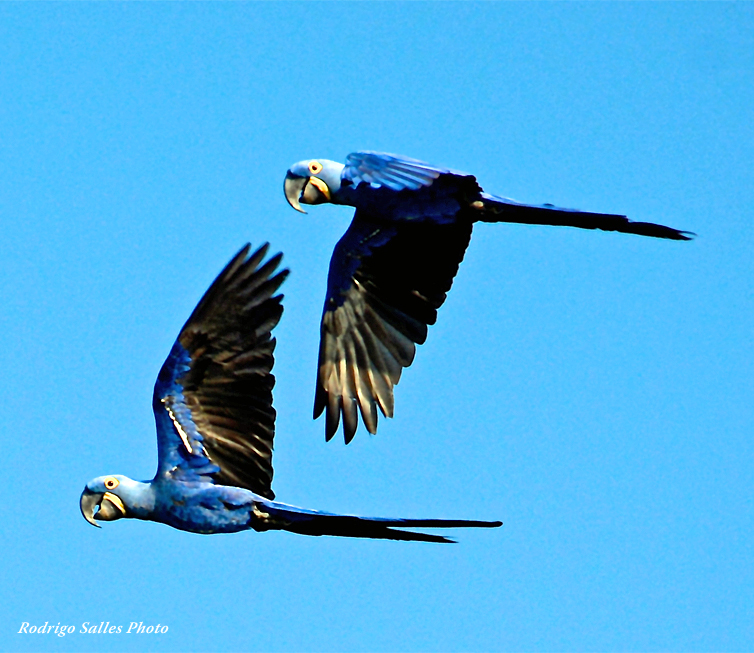Kendjam is a small Kayapó community located deep in Brazil’s isolated Mekragnoti Indigenous Territory.
Kendjam is an incredibly unique experience deep in the heart of the Amazon. Kendjam is a remote and small indigenous community in the remote land of the Kayapo Indigenous Nation. The Kendjam area is perhaps the most awe-inspiring and untouched Indigenous Territory in the Brazilian Amazon: the Mekragnoti Indigenous Territory. The Mekragnoti is an area of 5 million hectares of pure, virgin Amazon rainforest. Only 700 natives (15 families) live in this enormous area, one of the most isolated portions of tropical jungle on Earth. The Kayapo is the important Indian ethnic group in the Amazon. Their ritual life and social organization are extremely rich and complex, while their relationships with non-Indian society and environmentalists from the world over are marked by their intensity and ambivalence.
The Kendjam project took over two years to develop, collaborating between Untamed Angling, the Brazilian Government, and the Kayapo. The project launched in 2015 with a brief exploratory season, with great success. It is a true multi-species locale, targeting 10 different exotic species in swift clear waters. The river courses over a huge granite base, allowing for easy wet wading and many sight-casting opportunities.
The Iriri River is almost entirely located inside the Mekragnoti far-reaching Indian Territory and an Ecological Reserve (ESEC Terra do Meio). This untouched environment has more than 800 kilometers of rivers, and three major tributaries inside the exclusive fishing area. The Iriri River headwaters system has never before been fished before by “outsiders.” It begins its journey inside the jungle in the border of Mato Grosso and Para states, and run into the northeast side of the Brazilian Amazon for more than 1300 kilometers. It’s a tributary of the mystical Xingu River.
Kendjam is a hidden treasure, protected for centuries by the last guardians of the Amazon jungle: the Kayapo warriors.
This is an adventurous trip in the middle of an extremely remote tropical jungle area, all anglers must be physically and mentally prepared. You will see and experience many new things! You will want to come into this adventure with an open, exploratory mind. And, most importantly, respect for the land of the Kayapo warriors. It is their territory and their river, protected by their “warrior spirit” for centuries.
Check out this movie on Kendjam from our friend Todd Moen of Catch Magazine
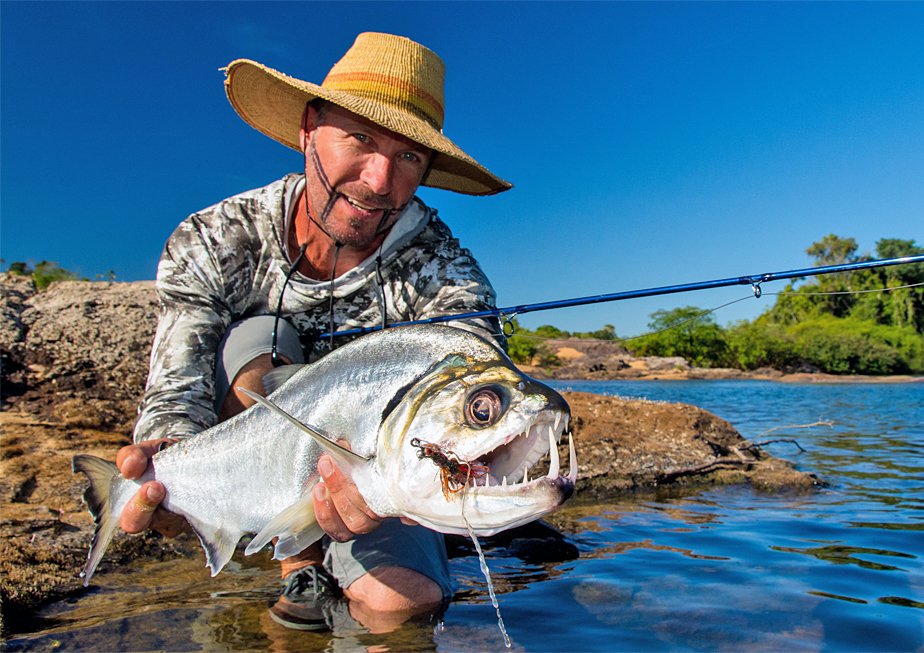
Reservations & Rates
The cost of the week-long Kendjam package is $7,250USD per person (Double Occupancy)
• A $700 Native Community Fee is also required
• Single Occupancy Rate (Single Room and Single Guide): $11,950 USD per angler
• Non-Angler: $3,850 USD per person
• A $380 Native Community Fee is also required
Inclusions
Included in your angling package at the Kendjam is All charter flights and boat transfers / All necessary ground transfers in Brazil/ 6 days fishing, fully guided / 7 night, all inclusive: lodging, meals, and beverage / One overnight at the Juma Opera Hotel in Manaus on arrival / Guided- fishing with one pro fly fishing guide and two Indian guides per two anglers / Fishing licenses.
Non-Inclusions
Not included in your angling package at Kendjam are $700 Native Community Fee / International air fare / Brazilian visa / Tips and gratuities for camp staff and guides / Food and beverages in Manaus / Airport departure tax / Satellite phone calls ($5/minute) / City tours in Manaus / Extra hotel overnights / Fly Fishing gear (rods/reels/tippet, leaders and flies (we have an extensive selection of best flies, lines and leaders at Camp)
Native Community Fee:
This Project was based as a long term social project which supports the preservation of the Indian Culture by improving their quality of life. The Kendjam Kayapo Indians have formed an association (AFP – Protected Forest Association) and board to protect their interests moving forward. This association includes representatives from many Kayapo villages representing the many Indian Communities inside the Mekragnoti Indian Territory. The project has a significant user fee on all visiting anglers. The funds from the fee will primarily be used for social projects, infrastructure development, transportation, and medical and education projects.
The Native Community Fee will be $700 per person for the trip and payable in (Cash $USD or Brazilian Reals) to the representative on your arrival in Manaus and goes directly to the Indian Association Account and anglers will receive a receipt from the Association. This fee represents an important step in the continuing effort to protect our ability to continue to share this amazing and unique part of the world.
Travel Insurance
The Fly Shop® is not in the insurance business, but we recommend Travel Guard coverage as a service with a desire to see your best interests protected. It is impossible to know when an unfortunate situation (loss of luggage, fly rods, illness in the family, or an accident) may occur. However, such things can and do happen, and this insurance can provide a means of recourse against non-refundable financial losses.
• Travel Insurance Information
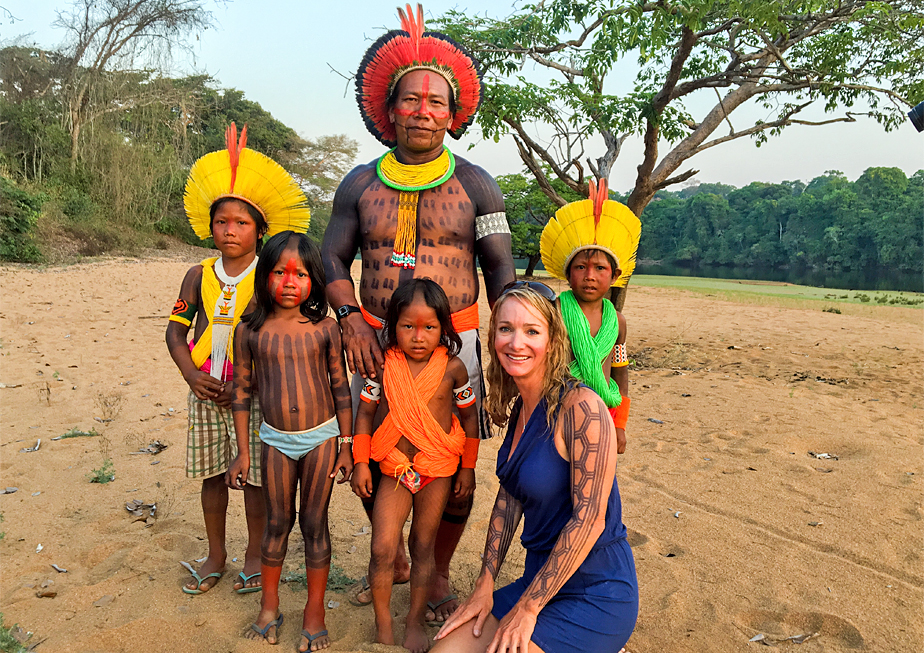
Seasons at Kendjam
In this region of the Amazon, the fishing season normally runs from late May through October. This is the dry season for the Xingu and Iriri Basin, the time when waters are at their lowest average levels and very clear, allowing for fishing throughout the entire river system, including its numerous tributaries. Based on what Kayapó for generations have deemed the best fishing window of the year for the many species of fish present in these sections of river, we focus the "fishing season" from June through September.
Read More
The rainy season in southern Brazilian Amazon starts in November and rivers reach their highest levels in March. That's the rhythm and annual cycle of high water. At the conclusion of the rainy season, rivers drop and clear very quickly. Millions of smaller fish now start their upstream migration to find food, largely staying in the most oxygenated waters of the Iriri's granite base runs and rapids. Predatory fish follow this migration, completing the pulse of life back up to the headwater systems.
It is a pretty clear dry season that is characterized by hot and windy days, cool nights and the almost total absence of mosquitoes. This is certainly the most pleasant time of year and the Kayapó refer to it as "good weather." In contrast, the rainy season is characterized by torrential downpours, the flooding inundation of the rivers and creeks, and by the annoying presence of a large number of mosquitoes and other types of insects. The Indians refer to this season simply as "rainy weather."
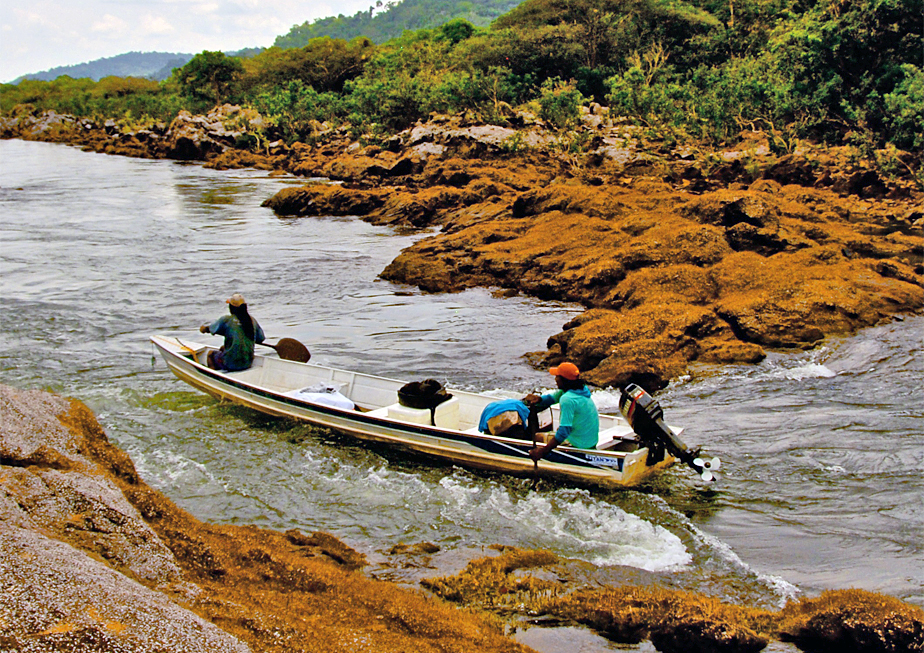
Getting to Kendjam
The week at Kendjam is from Sunday to Sunday. Most US guests will reserve flights to Manaus (airport code MAO) out of Panama City (Copa Airlines). There are also connecting flights into Manaus from Sao Paolo or Bogota for anglers coming from other parts of South America or Europe.
Saturday, The day before scheduled arrival at camp:
Read More
Arrive at Manaus International Airport. Upon arrival in Manaus, you will pass through immigrations and customs. Guests will greeted by our English speaking representative/transfer driver. They will arrange for transfers to the hotel in Manaus. You and another angler will be put up in a Double Occupancy room for the night (included in the trip package). The transfer staff will let you know when they will pick you up at the hotel the next morning, to take you to the charter airport. They will also collect the Native Community Fee ($700) from you at this time.
We often recommend arriving in Manaus a day earlier (on Friday) rather than late on Saturday night – this helps buffer you against possible airline delays or lost luggage into Manaus, and will give you a day to enjoy what Manaus has to offer. This is important as there is only one charter flight a week to Kendjam. Booking your arrival to Manaus too close to this charter flight time could prove highly problematic – if you arrive too late for it, getting your own private charter flight would be enormously expensive, if not impossible. Quite a few people opt to come in a day early as this virtually eliminates this potential problem. It costs an additional hotel night, but for many it is worth it, for the peace of mind.
Sunday:
After breakfast at the hotel, the transfer driver will pick the group up around 5:30 a.m. and head to the local airport, to board the Grand Caravan 8 person plane charter to the end destination. Arrive at the Kendjam Indian Community landing strip where our guides and staff will be waiting group. The fishing team and staff will serve lunch (sandwich) and anglers will have a brief explanation of the transfer to the lodge. You will drive 3 hours down stream, get set up in your room and get your rods/reels set up for next day.
Baggage:
Please do not bring unnecessary weight to the camp. We use small planes for air transfers to and from the camp and we strictly enforce weight limitations. You will be able to leave items not needed in camp with the hotel concierge in Manaus if you are returning to the hotel at the end of the week. We recommend this for traveling clothes, etc. The camp does not have laundry service, but the crew can wash clothes daily. There is a strictly-enforced 40-pound weight restriction per person for the twin-engine, turbo-prop flights divided as follows: one 10 lb. carry-on piece of luggage and one 30 lb. checked bag - soft duffle bags with no rigid bottom (except for rod cases). (If you have only one soft duffle bag it must be no larger than - length: 30in; Width: 22in; Height: 11in. NO HARD LUGGAGE.
Monday to Saturday:
Each day teams of two anglers will head out for the day, fishing downstream on the Iriri River and discovering its many channels and tributaries. Each two anglers will share a professional, English speaking fly fishing guide, along with a local native guide in an aluminum boat.
Typical Day:
6:30 am – Coffee is hot
7:00 am – Breakfast
8:00 am – Head to fishing grounds
12:00 - 1:00 pm – Anglers will have a picnic style lunch on the river
1:00 pm – After lunch, fishing will resume until late afternoon when the guides will deliver anglers back to the camp around 6pm. Every day the camp will be moved, and set up in a different place
6:30 pm – Cocktails and appetizers on the covered patio top deck
7:00 pm – Dinners will be served
Sunday Departure from Kendjam:
In the morning, guests will be transferred by boat to the Kendjam Community landing strip to fly back to Manaus at approximately 1:00 pm, weather permitting. On the return flight we will stop in Novo Progresso for Refuel and then head back to Manaus. You will arrive in Manaus around 4-4:30pm, (assuming no flight delays). Most anglers will be departing on the late night flight that evening, departing Manaus for Panama City at 3:45am on Sunday. If you do not feel like taking the red eye out of Manaus that night, another night's stay at the hotel can be arranged; this would not be included in the package, and we will need to know as far in advance as possible if you will need this extra hotel night. Should this be the case, the transfer driver will pick you up the following day, according to your flight departure time, and deliver you to the International Airport.
Travel Documents:
Brazil requires U.S. citizens to carry a valid U.S. passport when traveling to Brazil for any purpose. The U.S. government cannot assist you if you arrive in Brazil without proper documentation. It takes up to a month to process a new passport, so please plan accordingly.
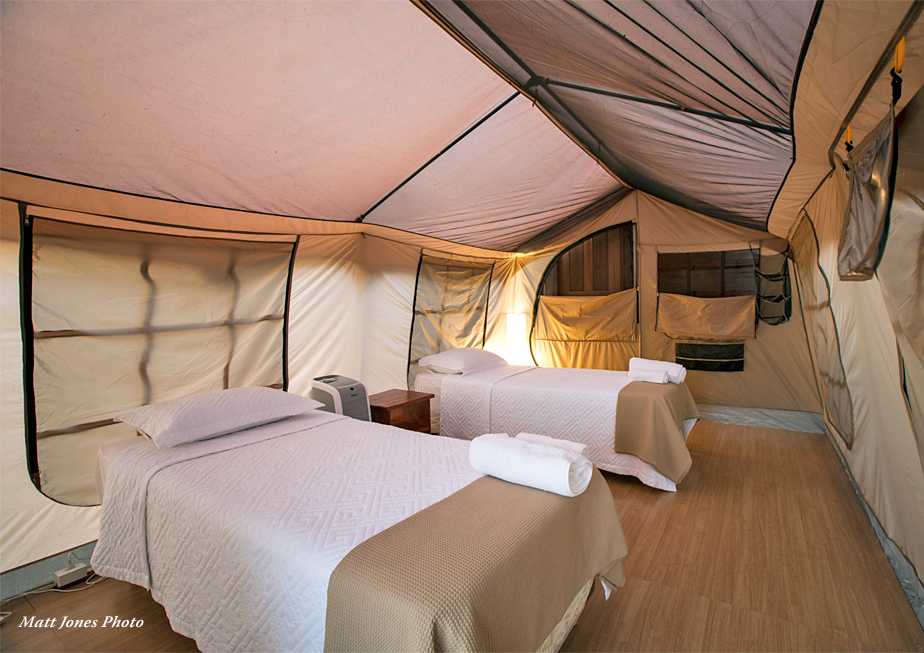
Lodging at Kendjam
The Kendjam Lodge accommodations are a comfortable double occupancy cabins with spring box beds, private bathroom, hot water and electric light. The camp is located in a wonderful sandy beach area in front of a beautiful pool of the Iriri River about 45 kilometers downstream from the Kendjam Community. Every evening guests will be delighted by wonderful cuisine in a well-fashioned living and dining room. Filtered water, Soda, Guarana, Wine and spirits will complete the beverage list of camp. Starlink satellite Internet Wireless connection is provided for all of our guests.
Read More
Solar panels provide full electric power every night and each cabin has 110-volt plugs so remember to bring your a European converter if needed. Laundry service is provided at the camp at no additional cost, just leave your clothes in a designated container in your room and they will be returned washed and clean, the dame day. For the most adventurous anglers, there is a two-night out camp location to reach the furthest and most wild areas of Iriri.
For a great resource on the people and history of the Kayapo nation, take a moment to read the article in National Geographic Magazine, issue January 2014.
• Nat Geo article on Kendjam/Kayapo:
http://ngm.nationalgeographic.com
• Nat Geo article on Kendjam/Kayapo:
http://news.nationalgeographic.com
• Interview with the Author:
http://video.nationalgeographic.com
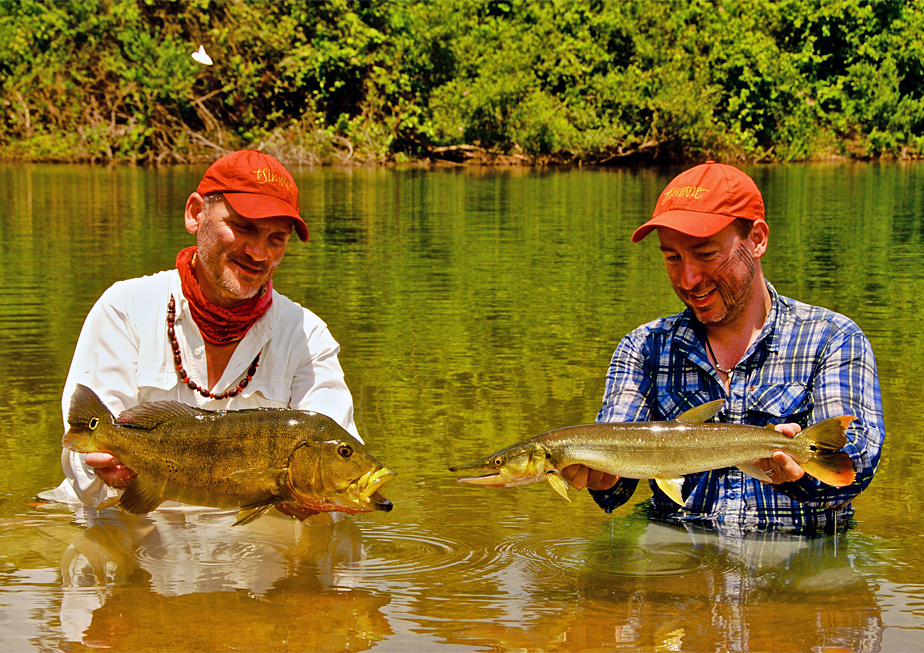
Fishing at Kendjam
The Kendjam project protects freshwater rivers which represent the most prolific multi-species fisheries in the Amazon, and possibly on earth. This incredible variety of species has evolved in a perfectly-suited ecosystem - the amazing wealth of food that comes from the Amazon forest, combined with the life-giving minerals found in the rivers. Together they create a perfect habitat for zooplankton, the foundation of the food chain which allows for such an incredible diversity of fishes.
Read More
The water clarity in these rivers is amazing, quite different from the sediment-filled rivers so common to the Amazon. The granite base keeps water very clear, even after some rain. The river downstream from the Kendjam community braids out into many parallel channels, creating several smaller, fast-moving streams, a perfect environment for wet wading. A few miles downstream the channels join again, re-forming a single main river. This braiding into channels is very common in many streches of Iriri River, and creates a fishing opportunity unique in Amazon waters. Probing the runs and pools of these smaller channels you can target different species using different techniques.
Imagine yourself in a clear jungle river with many different options for unique, powerful Amazon species, many of which most anglers have never even heard of. You can fish in pools using big hopper patterns for 3-10 pound Matrinxas, or even the crazy Curupete Pacu (3-12 pounds) which eat algae and insect imitations and love fast water (and often jump when hooked). Next, exploring runs and flat areas for peacock bass (averaging 4 to 15 pounds), you begin hooking bicudas - a fast, barracuda-like freshwater predator that will crush your fly and burn your fingers when they run. The next day, hiking in the humid early morning air of the jungle you see fish eating off the surface like trout. What fish could they be? The powerful Seringa Pacu, which eat insects and can be fished with dries and nymphs!
And there are more. We all like aggressive big fish, and Kendjam waters hold many, including the prehistoric trairao (wolf fish), and vampire-fanged payaras. We usually sight cast for 10-25 pound trairao in shallow water tributaries, and they act like hungry wolves chasing a piece of meat when you cast a popper or streamer in their direction. Payara are still a bit of a mystery for us in Kendjam; we have caught a few, but the Indians say there are many big ones in the river. We've seen them rolling in the pools and runs, so it will just be a matter of time before we figure out the right way to fish for them.
Rods:
5 to 8 weight single-handed rods are the norm. It is best to have two rods rigged with different lines and/or flies in the boat. Please plan on bringing extra backup rods, just in case. All of the saltwater series of the top rod brands are considered good choices. Your favorite trout rod for 5 and 6 weights and your favorite bonefish or baby tarpon rod will do just great. We recommend rigging one 5 or 6 weight rod for matrinxas and pacu with a floating line, and one #8 or #9 weight with floating for larger peacock bass, Payara and Trairao and Bicuda.
Reels:
Reels that have been designed for saltwater fly-fishing are the best choice. These jungle fish will test your stripping fingers more than your reel, but in the event you can get them on the reel before they get into the wood, reels with strong smooth drags are recommended. Bring a trusted reel that you feel comfortable with. Weight of the reel is important also since you will be casting a lot. 30-pound backing is required.
Lines:
Most of the fishing is done close to the surface of the water. Weight forward lines designed specifically for the tropics and saltwater are what you want. Scientific Anglers Master Titan Jungle Floating or comparable, ultra-aggressive, warm water fly lines hands-down work the best. Another amazing line is the Scientific Anglers Titan Jungle Clear Tip intermediate tip fly line, 15ft. Full floating Scientific Anglers Mastery Titan Jungle Floating fly lines are excellent for effortlessly throwing large wind resistant poppers. For smaller line weights (6-7 weight), a Scientific Anglers Redfish or Bonefish line is a great choice. Do not bring cold water floating lines, as the hot weather makes these lines soft and gummy. You will also want to bring a fast sinking sink-tip for some specific spots, and big payara. For this we recommend a Scientific Anglers Sonar Jungle Custom Tip fly line, or a 250-300 gr sink-tip line. We strongly suggest you bring at least one back up fly line.
Leaders:
Most fish are not really leader shy but the very clear water situation can make some big fish spooky, so fluorcarbon leaders make line invisible under water. Leaders should be strong and heavy enough to turn over big wind resistant flies, so heavy/strong butt leaders are important. Spools of fluorocarbon should include 50, 40, 30, 20 and 15 pounds. The most commonly used is 20, 30, and 40 pound Fluoro. Mono in 20-pound breaking strengths can also be used in certain situations. Some fish require longer, 9-foot leaders, while others just require a single straight piece of fluorocarbon tippet. You will also want to be sure to bring wire tippets from 20, 30 & 40 lbs for the Wolffish, Payara, and Bicuda. We prefer the knottable wire from Rio.
Flies:
Fishing is done using a wide variety of patterns including baitfish, large insect, fruit, and even algae imitations. There is a new world here to discover. For baitfish imitations, streamers in white, yellow, chartreuse and combinations of these colors are very effective. Flies with good action and movement in lengths from 2 to 6 inches, in 1/0 to 3/0 (high quality hooks). As for patterns, the most typical flies used are synthetic material streamers such as the Glimmer Minnow and the Cruiser Sardina. Many other baitfish imitations have proved to be very successful, among them Puglisi Streamers in medium to big sizes, Whistlers, and Deceivers and Half and Half's. Big foam poppers and Divers as well as rubber leg dry flies like Chernobyl Ants are fun to fish and should be included. For the fun dry fly fishing for pacus and matrinxas, we recommend #4-8 Chernobyl Ants, Fat Alberts, Hoppers, Attractors, and Stimulators.
Flies are available for sale at the camp for $7 each, but be sure to show up with a good selection as well. You can order a packaged selection for Kendjam species from us (recommended, and a sample package displayed below). We will discover a lot of new effective patterns during each trip, so have fun exploring new flies, too.
Wading Boots:
There is a lot of wading here, and some of the rocks can be slick. Felt wading boots are strongly recommended, and if you are used to using a wading staff at home be sure to bring it with you. Studs are not a good idea, however, as they can be noisy walking and spook fish in the calm, clear waters.
Why We Endorse This Destination:
Kendjam
• Kendjam is an incredibly diverse fishery, featuring opportunities to target multiple different species on the fly on any given day, many of which most anglers have never even heard of! Imagine sight-casting with dry flies for Matrinxas and Pacu, which eat insect imitations typically jump when hooked like a wild trout. Or casting large streamers for powerful peacock bass, or lightning-fast bicudas - a barracuda-like freshwater predator that will crush your fly and burn your fingers when they run. And always one must be prepared for huge, prehistoric trairao (wolf fish), or the toothy, vampire-fanged payaras. Every cast can bring a different fish to hand, all of them prone to take well-presented flies and put up a fight you’ll never forget.
• The Kendjam experience is far more than a mere fishing trip; it is a cultural odyssey beyond compare. The Kayapo Tribe is famous for defeating a dam, protecting its lands, and preserving the culture of their tribe for generations. Anglers at Kendjam will have the opportunity to meet the native guides of the tribe and be part of a traditional body painting. You’ll return home with a cultural experience that few others have been privileged to witness.
• Anglers at Kendjam have exclusive access to a huge, protected area. The Iriri River and its tributaries are located inside the Mekragnoti Indian Territory and the ESEC Terra do Meio Ecological Reserve, an environment of more than 800 kilometers of rivers and streams, completely un-impacted from the modern world. Most of this area has never been seen, let alone fished, by outsiders! You’ll be among the first to witness this area, casting to myriad exotic fish species that have never before seen a fly.

